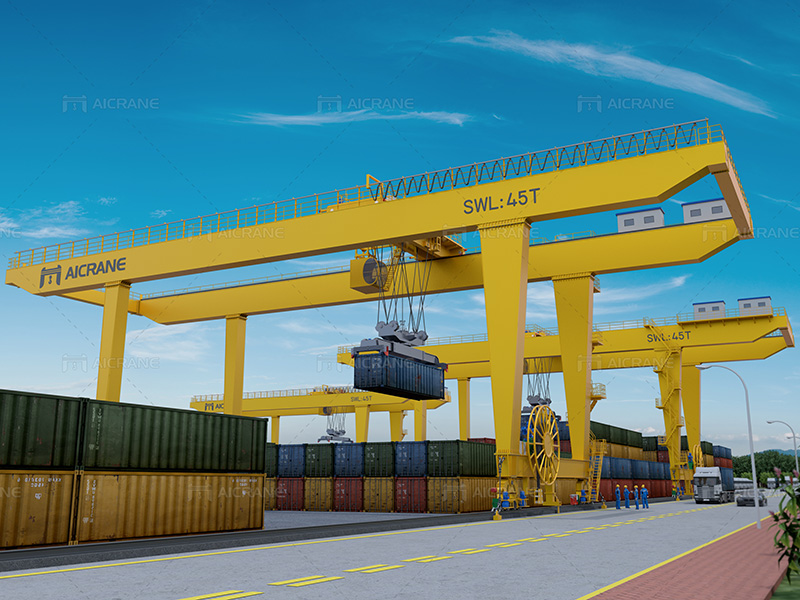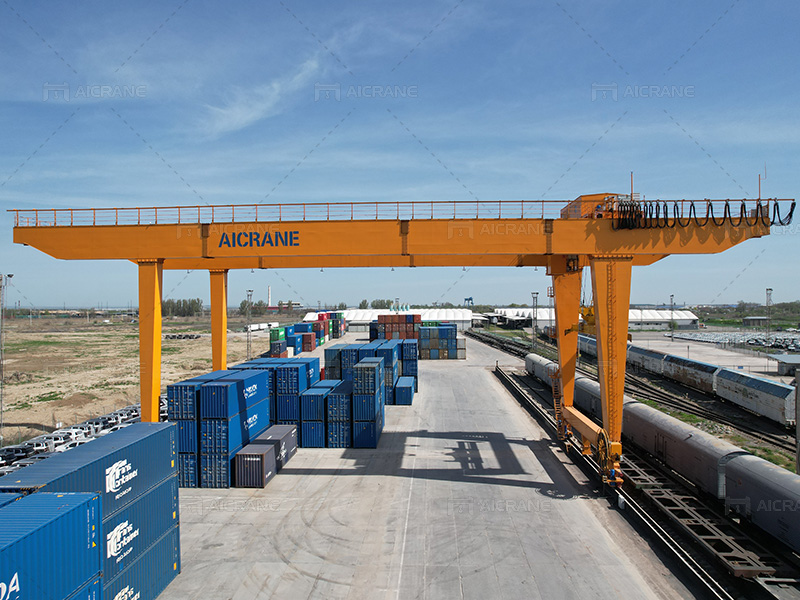In the ever-evolving world of logistics and port operations, container handling gantry cranes play a critical role. These cranes are essential for efficiently moving containers on and off ships, thereby facilitating global trade. For companies considering investing in container handling gantry cranes, a thorough investment analysis is paramount. This article delves into the key factors to consider, the potential returns on investment (ROI), and strategic insights to maximize the benefits of this significant expenditure.

Understanding Container Handling Gantry Cranes
Container gantry cranes are large, complex machines designed for loading and unloading intermodal containers from vessels. These container handling gantry cranes are vital for ports and terminals as they handle the bulk of containerized cargo. They come in various types, including:
- Rail-Mounted Gantry Cranes (RMG): Typically used in rail yards and port terminals, RMG cranes move containers between trucks, rail cars, and storage stacks.
- Rubber-Tired Gantry Cranes (RTG): These cranes offer flexibility as they can move across the yard, handling containers in various locations without the need for tracks.
Factors Influencing Investment Decisions
1. Initial Capital Cost
The upfront cost of purchasing a container handling gantry crane is substantial. Prices can range from several million to tens of millions of dollars, depending on the crane’s specifications, technology, and capacity. It’s crucial to consider not only the purchase price but also additional costs such as transportation, installation, and commissioning.
2. Operating and Maintenance Costs
Operating and maintenance costs are significant factors in the total cost of ownership. These include energy consumption, regular maintenance, repairs, and potential downtime. Investing in cranes with advanced technology, such as energy-efficient systems and automated features, can reduce long-term operating costs.
3. Technological Advancements
Modern container handling gantry cranes are equipped with advanced technologies, such as automated control systems, anti-sway mechanisms, and remote monitoring capabilities. These features enhance operational efficiency, safety, and precision. While they may increase the initial investment, the long-term benefits in terms of reduced labor costs and increased productivity are substantial.
4. Capacity and Throughput
The crane’s capacity and throughput are critical for determining its suitability for your operations. Factors such as lifting height, load capacity, and cycle time directly impact the crane’s ability to handle container volumes efficiently. Ensuring the crane’s specifications align with your operational needs is essential for optimizing ROI.
5. Infrastructure Compatibility
Assessing the compatibility of the RMG crane with existing infrastructure is crucial. This includes the quay structure, yard layout, and power supply. Modifications or upgrades to infrastructure to accommodate the new crane can add to the overall investment cost.

Potential Returns on Investment
1. Increased Operational Efficiency
Investing in advanced container handling gantry cranes can significantly enhance operational efficiency. Faster loading and unloading times reduce vessel turnaround time, allowing for higher throughput and increased terminal capacity. This efficiency translates into greater revenue potential and competitive advantage.
2. Cost Savings
Modern cranes with energy-efficient technologies and automation can lead to substantial cost savings. Reduced energy consumption, lower labor costs due to automation, and decreased maintenance expenses contribute to a lower total cost of ownership over the crane’s lifecycle.
3. Improved Safety and Reliability
Advanced safety features, such as anti-sway systems and remote monitoring, enhance the safety and reliability of crane operations. Reduced accidents and downtime improve overall productivity and protect valuable assets, further contributing to ROI.
4. Scalability and Flexibility
Investing in Aicrane gantry cranes that offer scalability and flexibility allows terminals to adapt to changing demands. Cranes with adjustable configurations and modular designs can accommodate various container sizes and weights, ensuring long-term usability and value.
Strategic Insights for Maximizing ROI
1. Comprehensive Feasibility Study
Conducting a detailed feasibility study is the foundation of a sound investment decision. This study should encompass market analysis, demand forecasting, cost-benefit analysis, and risk assessment. Engaging with industry experts and consultants can provide valuable insights and help in making informed decisions.
2. Vendor Selection and Negotiation
Choosing the right vendor is critical for ensuring the quality and reliability of the crane. Evaluate vendors based on their track record, technological offerings, after-sales service, and warranty terms. Negotiating favorable terms and conditions, including maintenance contracts and training programs, can add significant value.
3. Training and Skill Development
Investing in the training and skill development of crane operators and maintenance personnel is essential for maximizing the efficiency and lifespan of the crane. Well-trained operators can leverage advanced features effectively, while skilled maintenance teams ensure minimal downtime and optimal performance.
4. Regular Monitoring and Upgrades
Implementing a robust monitoring system to track the performance and condition of the crane is crucial. Regular maintenance, timely upgrades, and leveraging data analytics for predictive maintenance can prolong the crane’s life and enhance ROI.
Conclusion
Investing in container handling gantry cranes is a strategic decision that can yield significant returns for port operators and logistics companies. By considering factors such as initial capital cost, operating expenses, technological advancements, and infrastructure compatibility, companies can make informed investment decisions. With proper planning, vendor selection, training, and maintenance strategies, the potential benefits in terms of operational efficiency, cost savings, safety, and flexibility can be fully realized. A comprehensive investment analysis ensures that the substantial expenditure on container handling gantry cranes translates into long-term value and competitive advantage in the dynamic world of global trade. For more info, visit https://steelmillcranes.com/